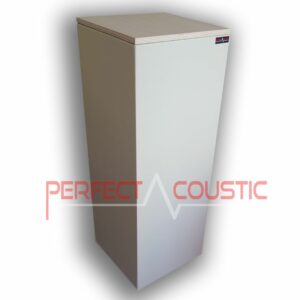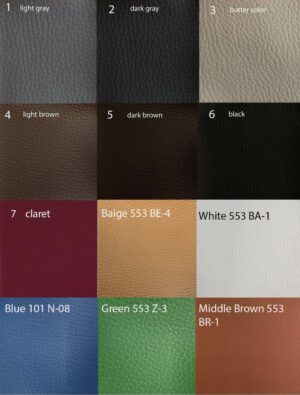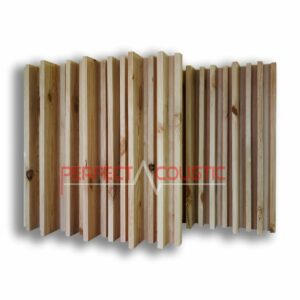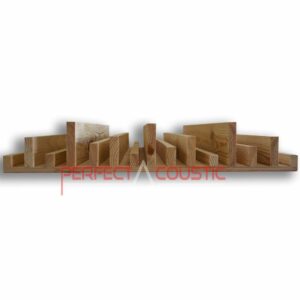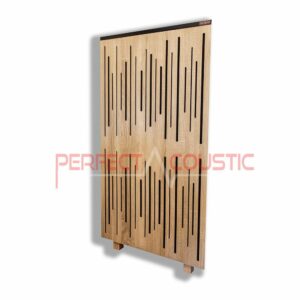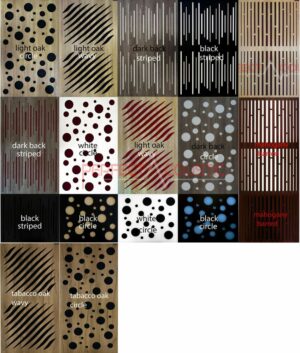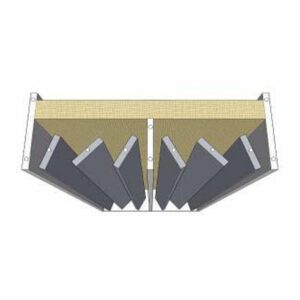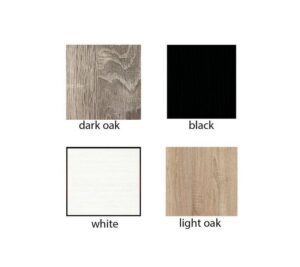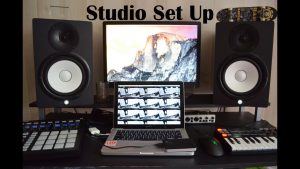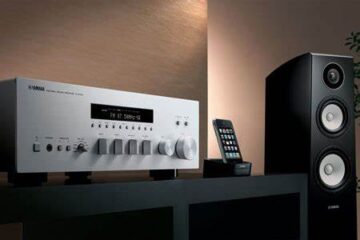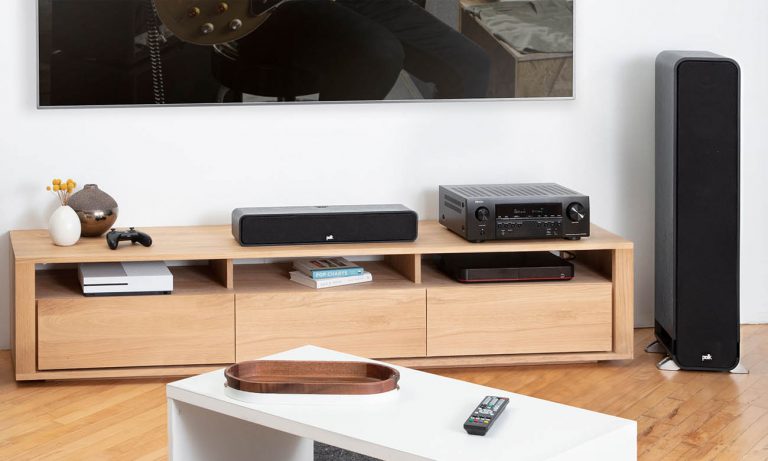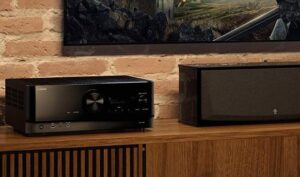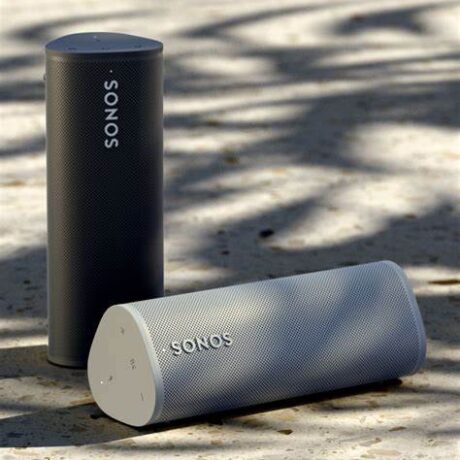Yamaha HS5 Studio Monitor Review
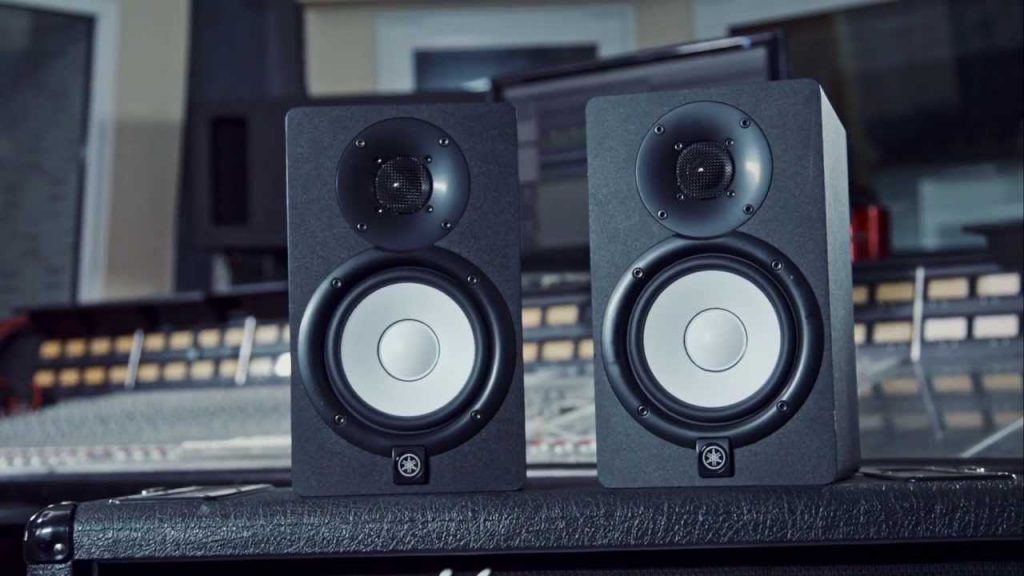
The Yamaha HS5 is the smallest speaker in the HS series from the Japanese manufacturer. The brand’s popularity is unbroken among hobby audio fans and professional sound engineers alike. We’ve tested the Yamaha HS8 studio monitor before, the HS5 could look like the little brother of the HS8.
-
Giga bass panel with membrane94 € – 129 € +Vat
-
Striped Sound Diffuser 60x60x9cm108 € – 140 € +Vat
Fresh and stylish design
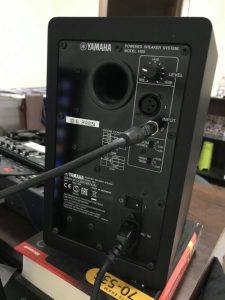
From the very first moment, I liked the clean, pleasant design of the speaker. The monotony of the black box is broken by the white subwoofer cone, below which is the Yamaha logo, which glows when the device is switched on. The fresh-faced, decorative monitor looks good in any room or studio. However, its small size does not mean that the manufacturer was cheap on the materials used for the production of the speakers. The speaker box is made of MDF boards, which guarantees strength and stability. The Yamaha HS5 is a portable bass-reflex speaker that may not sound too promising to many at first hearing. This is understandable, as resonance is usually a problem with portable monitors. A further disadvantage is that the lower frequencies sound less clearly. Yamaha had this in mind when designing the HS5, so the truly stable, rugged, resonant-free housing eliminates these potential flaws.
Some information about HS5
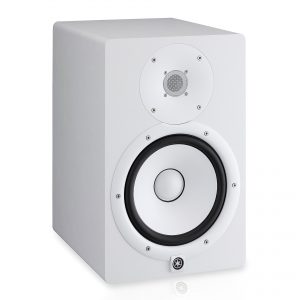
The HS5 is equipped with two amplifiers, the subwoofer is powered by a 45 Watt and the tweeter by a 25 Watt amplifier. The frequency transmission is 74-24 kHz. The speaker has 2 balanced XLR and TRS inputs, which is not the most practical, as even most entry-level DJ audio devices offer RCA connectivity. With the help of the room controller on the back panel, we can correct the acoustic deficiencies of the given room. The High Trim filter can be used to adjust higher ranges. The speakers can also be mounted on the wall. It is important to place the monitors at least 5 meters away from the wall, if possible.
Small and strong, but not strong enough!
The sound of Yamaha’s smallest studio monitor leaves something to be desired. We found the middle ranges to be perhaps the most problematic. Due to the mid-frequency response, we may experience a “hollow” sound. High tones, on the other hand, sounded nice, natural, and sharp, but the High Trim filter comes in handy for handling high ranges.
Here are the basses; but where?!
The bass range is almost non-existent for this speaker. The small size of the HS5 can also contribute to this, so an extra subwoofer is essential if you want to hear deep tones as well. However, in acoustically untreated rooms, this disadvantage can also become an advantage, as it amplifies bass in untreated rooms. Sound engineers are not afraid of the lack of bass sounds, it is absolutely suitable for mixing music.
-
Sound traps with diffuser- If a good look is important146 € – 155 € +Vat
-
Flexi acoustic panel with adjustable wooden slats194 € – 287 € +Vat
Let’s listen to what it does!
We started testing the speakers putting on one of the best known and most successful singers, Pink’s song: What about us. We took the test in a small sound mixing studio in Dunaújváros. The acoustics of the studio were flawless, the walls and ceiling were treated with wall panels. While listening to Pink’s hit, the lack of deep sounds intensified in the room featuring perfect acoustics. However, we were satisfied with the trebles. The stage image was wide and rich in details. Ed Sheeran’s wonderful song Perfect was played on an acoustic guitar this time. The excellent sound of the acoustic music came as a pleasant surprise. The Yamaha monitor produced a detailed and harmonious music experience. We continued the tests with a brand new hit we have downloaded: What’s love got to do with it performed by Kygo and Tina Turner. The detail and wide stage image was there as well, but we also noted the lack of basses, nevertheless, what we heard was overall clear.
Our opinion
The Yamaha HS5 small, portable studio monitor is primarily recommended for sound mixing. We also recommend it for smaller rooms, it can also be used as a local speaker.
Advantages:
-nice, sharp and clear high frequency ranges
-detailed stage image impressive, resonance-free housing
-small size
– fresh, stylish design
– 2 amplifiers
-reasonable price
-amplifies the bass in rooms with unfavourable acoustics
Disadvantages:
-the bass range is very weak
-the medium sounds are too intense
-cables are not included with the speakers
For those who like more powerful basses, don’t choose the HS5!
G.H.

